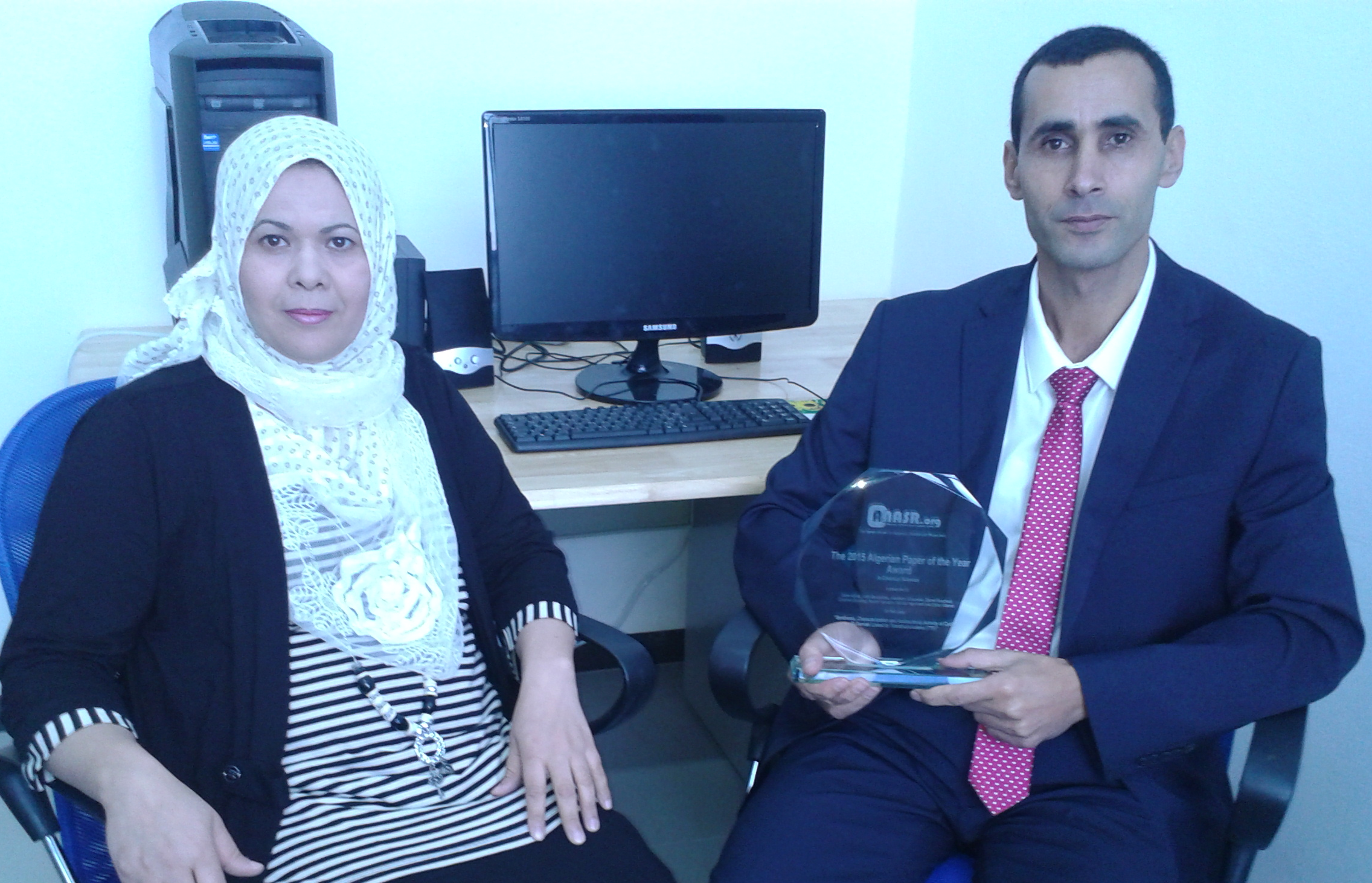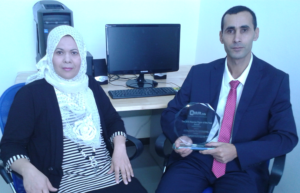Interview | Winners of the 2015 Algerian Paper of the Year in Chemical Sciences
Inspire Magazine speaks with Dr Tahar Abbaz Senior Lecturer and Head of the Organic Chemistry and Bio-Organics research groups in the “Aquatic and Terrestrial Ecosystems”, and also member of the laboratory of organic materials and heterochemistry at the University of Tebessa. Dr Abbaz is the lead author of the paper entitled: “Synthesis, Characterization and Antibacterial Activity of Cyclic Sulfamide Linked to Tetrathiafulvalene (TTF)”, which won the 2015 Algerian Paper of the Year Awards in Chemistry.
Inspire Magazine: Thank you for speaking to Inspire Magazine and many congratulations for winning the 2015 Algerian Paper of the Year Award in Chemical Sciences. How do you feel about winning this award?
Tahar Abbaz: Thank you. I am pleased to have won this award and very happy that such rewarding competition exists. I am proud that this novel work has been peer reviewed by a panel of referees of the highest calibre and honoured for it being selected as the best publication. This recognition will encourage me to produce more in the field and will be incentive to continue our strive to find groundbreaking solutions for pathological conditions yet to be cured. I would like to take the opportunity to thank my co-authors and especially my spouse Dr. Amel Benjeddou for their important contribution.
IM: Can you tell us what your award winning paper is about in simple terms?
TA: This work is very original. The novelty stems from linking two major chemical classes: biomolecules particularly biologically active molecules such as sulphonamides on one hand and the π-electron donor compounds (e.g. tetrathiafulvalenes TTFs) which form the building blocks to construct organic materials on the other. The rationale behind this approach is to create a biologically active molecule which can also be used as organic material following complexation with π-electron acceptor molecules (namely tetracyanoquinodimethane TCNQ). In this study, we have evaluated the biological activity and further work is underway to attain the organic material from these molecules and check its electrical behaviour.
IM: Why is this an important problem to address?
TA: The pathway based on macromolecular chemistry we are in the process of developing has major biomedical applications including implantable biomaterials such as heart valves, hip implants, portable and implantable pumps and dental implants among many. Tantalisingly, They can also be used as parts in human organs. The biomaterial synthesised in this instance does not require grafting onto prosthetic or metallic surface polymers; it is indeed an smart bifunctional material in that it can possess antibacterial activity and act as a conductor of current/ semiconductor or insulator.
IM: What is the exact contribution(s) of the paper to your field of research and how does it compare to other approaches that exist in the literature?
TA: It is a new line of innovative research, the idea is original. The concept falls under the umbrella of biomaterials but if the project progresses as anticipated, the results could open the door to countless biomedical applications.
IM: What kind of support, if any, have you received to help you accomplish this work?
TA: This work forms part of a research project coded E03420130006 and sponsored by the National committee of evaluating and Programming University Research CNEPRU)
IM: How did you get into this particular research and where does it fit in relation to other work conducted in your research lab or institution?
TA: I would like to tell you a little story behind my interest in this field. My wife is an organic chemist who worked on the synthesis of heterocyclic compounds with therapeutic applications. In 2012, she published a work titled “A New Class of Heterocycles: 1,4,3,5-Oxathiadiazepane 4,4-dioxides”. For my part, I have always been interested in organic materials with numerous contributions in the field. Following the completion of our doctorates, we transferred from the University of Tebessa to Souk Ahras Research Centre where we faced a severe lack of resources to conduct advanced research and spent the first four years fulfilling teaching duties only. During this time, we considered conducting some research work in the laboratories where we pursued our postgraduate studies (laboratory of organic chemistry at the University of Annaba and the laboratory of organic materials and heterochemistry at the University of Tebessa) but that proved impractical due to our commitments. It was not until the centre at Souk Ahras was turned into a fully fledged university and research projects were launched in well equipped laboratories. That was when I had the idea of coupling two research areas: Therapeutic Heterocycles and and organic materials. The idea was discussed with our collaborators abroad, an extensive literature research was conducted and we discovered that there is very limited work that focused on the concept and none discussed the idea of linking TTFs into biomolecules.
IM: What is your take on the state of this type of research in Algeria? And how do you see it progressing in the future?
TA: This is a very new line of research which is still at its premature stages and could evolve tremendously in the right conditions. We welcome any collaboration with Algerian or International research groups.
IM: Thank you again for speaking to Inspire Magazine, and all the best for your future endeavours.
TA: Thank you very much for this opportunity. I wish you a lot of success.
1 Comment so far
Event Report | The 2015 Algerian Paper of the Year Awards | Inspire MagazinePosted on 5:54 pm - Jan 5, 2016
[…] Here is the interview with Dr Tahar Abbaz Honourable Mentions for Chemical Sciences: […]


About the Author